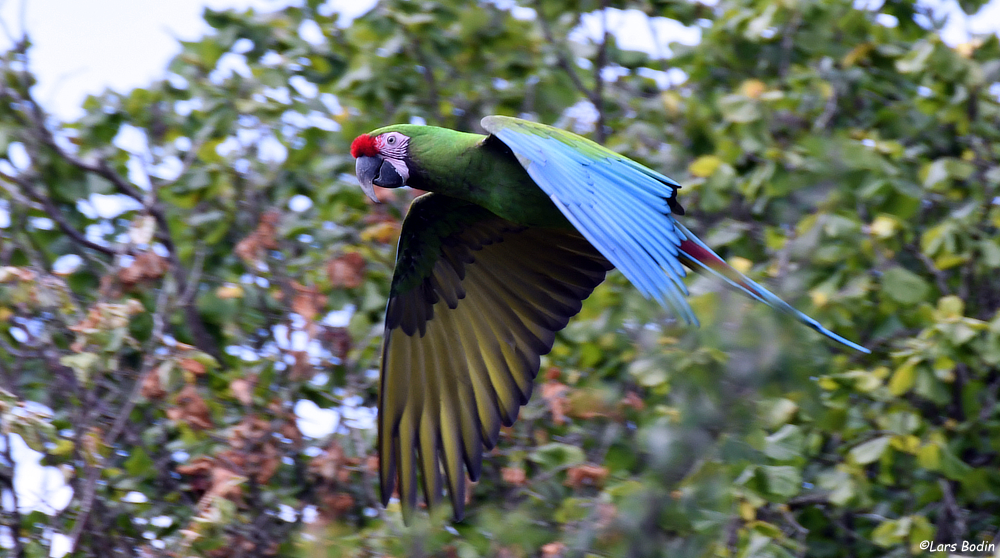Ara militaris – Military Macaw
The Military Macaw – Ara militaris (Linnaeus, 1766) is a large green macaw.
With proper care the lifespan is about 60 years. Wild birds reach a lifespan of 50-60 years.
They are very playful and curious. They are highly intelligent and can learn to perform tricks and mimic words and short sentences.
They are listed as Vulnerable on the IUCN Red List and included in CITES Appendix I and EU Annex A!
Description
Large macaw with an overall green plumage with olive wash on back and wing covers. Bright red patch on forehead. The face is bare white/pink with fine lines of small black feathers. The eyes are yellow. Blue flight feathers. Bright blue rump. The tail is very long, upper tail is is dark red/brown with dark blue tip. The bill is very large and grey/black.
Juveniles are similar but have a shorter tail and grey eyes.
Size: 70-75 cm
Weight: 900 g
Subspecies
- Ara militaris militaris (Linnaeus, 1766) – natural habitat include tropical Colombia, northwestern Venezuela, Ecuador and northern Peru. Throat is olive/brown.
- Ara militaris bolivianus (Reichenow, 1908) – natural habitat include tropical Bolivia and extreme northwestern Argentina. Similar to A.m. militaris but with a red/brown throat and red bases on ear coverts. The tip of the tail and outer webs on primary feathers are darker blue.
- Ara militaris mexicanus (Ridgway, 1915) – are located in arid western Mexico from Sonora to Isthmus of Tehuántepec. Similar to A.m. militaris but larger.
Habitat
The natural habitat covers a large area from western Mexico over Colombia, northwestern Venezuela, Ecuador, northern Peru, Bolivia to northwestern Argentina.
They are usually found in wooded foothills at altitudes of 500 – 1500 m but sometimes up to 2000 m.
In Mexico they are mostly seen in secluded uplands in dry woodland but occasionally also in lowland humid and riparian forests. In Columbia and Pacific Mexico they are also seen at lower altitudes. In Venezuela they prefer rainforest up to 600 m. In Columbia they are found in humid forests of the Andes.
Diet
Wild birds feed on a wide variety of nuts, seeds, fruit and berries.
High quality pellet should form the basis of the diet. Soaked or sprouted sunflower seed is a healthy supplement. Also provide nuts like walnuts, pecans, Brazil nuts and pine nuts. Provide a variety of fruit and vegetables e.g. fresh corn, cooked maize, banana, apples and oranges.
Aviculture
The clutch contains 2-3 eggs that are incubated for about 26 days. The chicks reach fledging age after 13 weeks. They reach sexual maturity when they are 2-4 years old.
Taxonomy
- Order: Psittaciformes
- Family: Psittacidae
- Genus: Ara
Synonyms
- Danish: Soldaterara, Soldater Ara
- English: Military Macaw
- French: Ara militaire
- German: Soldatenara
- Portuguese: Arara-militar
- Spanish: Guacamaya Verde, Guacamayo Militar, Guacamayo Verde, Papagayo verde
- Scientific: Ara militaris
IUCN Red List

https://dx.doi.org/10.2305/IUCN.UK.2020-3.RLTS.T22685548A179407584.en
Downloaded on 9 July 2021





